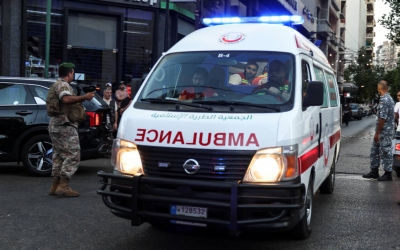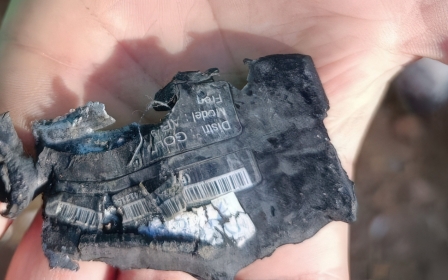Lebanon pager attack: Israelis receive threatening texts after blasts

Thousands of Israelis received threatening text messages on Wednesday, which appeared to have been sent by Hezbollah affiliates.
The messages, some of which included web links that Israeli authorities say are suspicious, came after thousands of pagers and hand-held radios used by members of Hezbollah exploded across Lebanon.
The blasts, which came in two waves on Tuesday and Wednesday, killed at least 37 people, including two children, and wounded more than 3,000, according to the Lebanese health ministry.
Many Israelis reported receiving text messages instructing them to go to bomb shelters.
The senders posed as Israel's Home Front Command, a military body that regularly issues alerts to citizens.
New MEE newsletter: Jerusalem Dispatch
Sign up to get the latest insights and analysis on Israel-Palestine, alongside Turkey Unpacked and other MEE newsletters
However, some of the messages used incorrect Hebrew. Other used a threatening tone and some were in English.
“Say goodbye to your loved ones, but don't worry. You'll hug them in hell in a few hours,” one text read.
The message was sent by “SyHaNasrala” according to Haaretz, apparently in reference to Hezbollah’s leader, who is referred to as Sayyid Hassan Nasrallah.
“If you want to live, leave. If you want to stay, go to hell,” another message read in English, the Israeli newspaper added.
The Israeli military said on Wednesday that it had not issued any emergency alerts instructing people to seek bomb shelters.
According to Israeli public broadcaster Kan, Israeli authorities are investigating whether the messages were sent by Iranian-linked actors.
Following the radio blasts, Hezbollah said it would take revenge.
Nasrallah is set to address the attack in a speech on Thursday.
Meanwhile, the explosions have increased fears they could lead to a wider escalation between Hezbollah and Israel.
The Israeli military moved the 98th Division from the Gaza Strip to northern Israel on Wednesday amid heightened tensions.
The large unit, consisting of 10,000 to 20,000 paratroopers and commandos, was one of the main divisions spearheading the fighting in Gaza.
Middle East Eye delivers independent and unrivalled coverage and analysis of the Middle East, North Africa and beyond. To learn more about republishing this content and the associated fees, please fill out this form. More about MEE can be found here.





